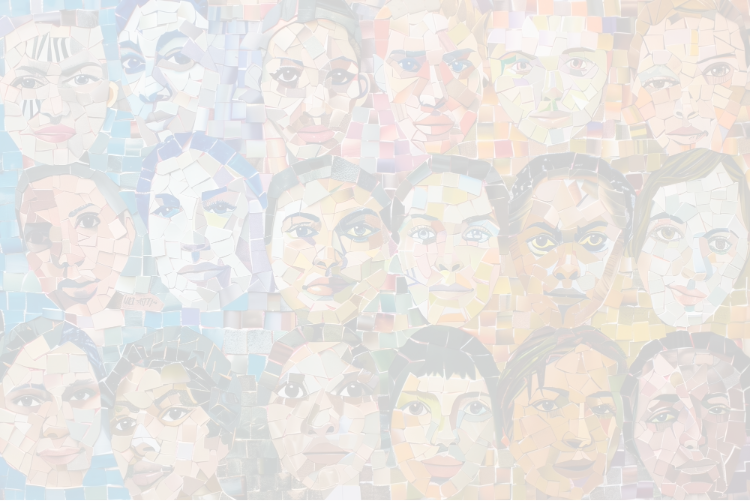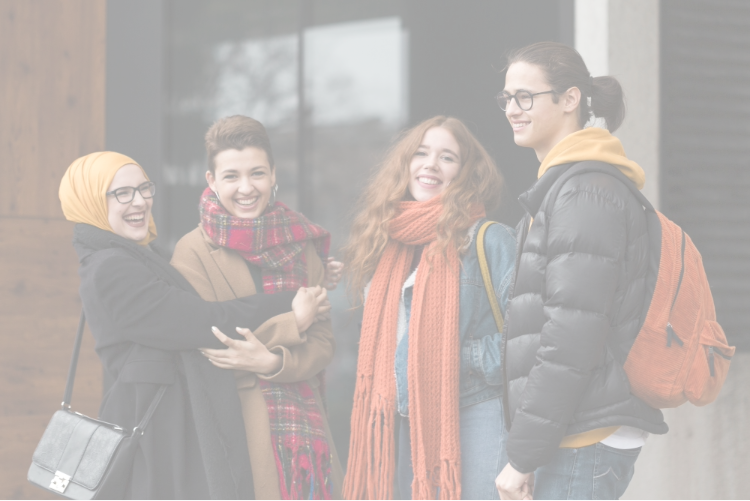
European Values in the Classroom
Education plays a vital role in shaping a democratic, inclusive, and reflective Europe. Drawing on insights from the VAL-YOU publication “European Values Made Tangible”, this platform translates research and measurement concepts into practical classroom ideas across different subjects.
Values are not only abstract principles – they are lived experiences that can be fostered through education. As the VAL-YOU report reminds us:
“Values are not simply taught but experienced, reflected upon, and practiced.”
(European Values Made Tangible, p. 136)
Here, teachers will find interdisciplinary approaches and ready-to-use examples that support value-based learning in all subjects – from civic education to language, art, or science, for the six values dealt with in the report on European values:
Each section combines a short conceptual overview with concrete ways to work with these values in class, helping educators bring Europe’s shared principles to life for the next generation.
Democracy
Support for political system in which citizens have the power to make decisions
Democracy in your classroom
Let students vote on activities or projects.
Use class councils or discussion circles for joint problem-solving.
Give everyone a turn to lead, moderate, or represent the group.
Hover to flip the card
Concepts in education
When teaching democracy, it is important to help students understand not only what democracy is, but how people relate to it. The concepts of diffuse and specific political support make this tangible: they show how citizens’ general belief in democratic principles and their trust in political institutions shape engagement and participation.
Diffuse political support (general beliefs about political system: democracy)
Tangible measurement:
- How important is it for you to live in a country that is governed democratically?
- What do you think about these types of political systems as a way of governing this country:
- Having a strong leader who does not have to bother with parliament and elections
- Having experts, not government, make decisions according
to what they think is best for the country - Having the army rule the country
- Having a democratic political system
Specific political support (positive evaluation of government and parliament)
Tangible measurement:
How much confidence you do have in:
- Parliament
- Political Parties
- Government
Bringing the Value to Life in Different Subjects
Civics / Social Studies
Opinion Line on the statement: “Having a strong leader who does not have to bother with parliament is a good way to govern.” Students first position themselves along an opinion line according to their views. Then they read a short text on democratic principles using the INSERT method (marking what they agree with, question, or find new). Afterwards, they reposition based on the new evidence and discuss what influenced their thinking.
Role play – Press conference: Students simulate a press conference with roles for the government, opposition, and journalists. Each group prepares statements and questions on a current issue. Afterwards, students evaluate performance and accountability, reflecting on transparency and the role of the press in a democracy.
History
Case study: From Weimar to Nazi Germany. Students investigate the factors that undermined diffuse support for democracy during the Weimar Republic. They create a visual map of the democratic “guardrails” (e.g., institutions, norms, civil society) and identify when and how these failed, leading to the rise of authoritarianism.
Mini‑inquiry: compare moments of high vs. low trust in one country’s history; identify triggers and reforms.
Language
Dystopia book club (e.g., Orwell’s *1984*). Reading circles identify what democratic safeguards are missing and how that affects citizens.
Op‑ed writing: “What builds trust in institutions?” Peer‑review for argument quality and evidence.
Ethics
Values Quadrant – Liberty vs. Order and Individual Rights vs. Collective Goals: Students explore moral and political tensions by placing real-world cases (e.g., curfews, data privacy, climate action) on a values quadrant. They then justify their placements, reflecting on how societies balance freedom, responsibility, and the common good.
Arts
Poster or short video “Democracy matters when…”. Focus on everyday examples (student council, local participation).
Mathematics
Analyse a (fictional or open) dataset of ‘importance of democracy’ by country/age; compute means, graphs; discuss patterns and possible causes.
Design and run a class survey on institutional trust; calculate confidence intervals and present results.
ICT
Simulate an e‑petition and deliberation forum with moderation rules; reflect on how platform design supports or harms democratic culture.
Pluralism
Support for the idea that individuals with different backgrounds, cultures, beliefs and opinions can live together in a democratic society
Pluralism in your classroom
Encourage to express opinions freely and respectfully.
Let students make choices.
Discuss the balance between personal freedom and responsibility.
Hover to flip the card
Concepts in education
Teaching pluralism means helping students understand how diversity strengthens democratic societies. By examining social distance and perceived ethnic threat, learners explore how acceptance of different groups and attitudes toward diversity influence social cohesion. These concepts encourage reflection on inclusion, empathy, and respect for cultural and religious differences.
Social distance towards religious and ethnic outgroups
(acceptance of outgroups as neighbours)
(acceptance of outgroups as neighbours)
Tangible measurement:
Could you identify any group of people that you would not like to have as neighbours?
- Jews
- Roma
- Muslims
- Christians
- People of a different race
- Migrants
Perceived ethnic threat (feelings of cultural or economic competition with immigrants)
Tangible measurement:
Please look at the following statements and indicate where you would place your views on this scale (1-10)?
- Immigrants take jobs away from a country’s citizens TO Immigrants do not take jobs away from a country’s citizens
- Immigrants make crime problems worse TO Immigrants do not make crime problems worse
- Immigrants are a strain on a country’s welfare system TO Immigrants are not a strain on a country’s welfare system
- It is better if immigrants maintain their distinct customs and traditions TO It is better if immigrants do not maintain their distinct customs and traditions
Bringing the Value to Life in Different Subjects
Civics / Social Studies
Chess Board activity: Students position themselves on a large floor grid according to their agreement with statements such as “I would not want a migrant as a neighbour.” After discussing perspectives and emotions, they research local initiatives that promote intercultural contact and inclusion.
Data investigation: Students compare public claims about migration, employment, or welfare with empirical evidence from official data sources. They then write a briefing paper summarising their findings and conclusions.
Policy lab: Students co-design practical measures to reduce perceived competition, such as language courses, recognition of qualifications, or mentorship programmes, and present them as policy proposals.
Geography
Neighbourhood mapping: identify diversity in the local area; interview project about everyday neighbour relations. Includes mapping and analysing the local space.
Language
Narrative project: interview or write a profile of a neighbour from a different background; focus on common ground.
Art
Photo essay “Neighbours”: visual stories that highlight diversity and shared spaces; gallery walk critique.
Ethics
Students engage in a structured dialogue about the moral reasons for hospitality versus avoidance toward others. They share personal views and ethical arguments, then connect the discussion to concepts of human dignity and reciprocity, reflecting on what it means to treat others as equals.
History
Past migration waves: what fears were expressed then, and what happened later? Timeline & reflection.
Mathematics
Survey experiment in class: Students design a short survey with different wordings of the same question to test how phrasing affects the perceived level of threat or bias. They collect class data, calculate percentages, means, and correlations, and analyse the results statistically to discuss how wording can influence interpretation and perception.
Freedom
Support for the idea that everyone can live their lives the way they choose, without pressure or coercion from authorities or other people
Freedom in your classroom
Share and celebrate different perspectives.
Share and celebrate different perspectives.
Challenge stereotypes and bias together.
Hover to flip the card
Concepts in education
Teaching freedom invites students to reflect on what it means to live according to one’s own choices while respecting others. By exploring the feeling of free choice and permissiveness, learners consider how personal autonomy connects to moral and social attitudes in democratic societies. These concepts open reflection on how freedom is exercised responsibly and how values guide decision-making.
Feeling of free choice
(feeling of having completely free choice and control over your own life)
(feeling of having completely free choice and control over your own life)
Tangible measurement:
Some people feel they have completely free choice and control over their lives, and other people feel that what they do has no real effect on what happens to them.
Please indicate how much freedom of choice and control you feel you have over the way your life turns out?
Permissiveness
(justification of homosexuality, abortion, divorce, and euthanasia)
(justification of homosexuality, abortion, divorce, and euthanasia)
Tangible measurement:
Please tell me for each of the following whether you think it can always be justified, never be justified, or something in between:
- Homosexuality
- Abortion
- Divorce
- Euthanasia (terminating the life of the incurably sick)
Bringing the Value to Life in Different Subjects
Civics / Social Studies
Rights in everyday life: Students explore everyday situations to identify which rights safeguard personal freedom and autonomy—such as the right to education, privacy, or freedom of movement. They discuss how these rights allow individuals to make independent choices and what challenges arise when freedom is restricted.
Mock committee hearing on a proposed law; include expert testimony and citizen voices; deliberate and vote.
Ethics
Head‑Heart‑Hands: After watching a short film, students reflect using the Head-Heart-Hands model — What do I think, feel, and do when someone’s freedom is limited? They connect emotional, cognitive, and action-oriented responses to deepen their understanding of the value of freedom.
Structured academic controversy on one of the issues with evidence packets; rotate roles to ensure empathy.
Language
Personal essay: “A time I exercised (or lacked) free choice”; peer feedback on agency and context.
Rhetoric lab: analyse persuasive speeches for and against permissiveness; deliver balanced micro‑speeches.
History
Legal change timelines: Students research and create timelines showing when major legal changes occurred in different European countries regarding homosexuality, abortion, divorce, and euthanasia. They then compare the sequences and driving factors—such as social movements, political reforms,
ICT
Debate online freedom of expression and privacy: how do algorithms or social media platforms influence what we can say or see?
Mathematics
Analyse survey data about people’s perceived freedom across Europe (e.g. from Eurobarometer or EVS) and discuss patterns or inequalities.
Art
Create posters, photography, or digital art representing personal or collective freedom — and what limits or empowers it.
Equality
Support for the idea that all individuals have equal rights before the law
Equality in your classroom
Share and celebrate different perspectives.
Encourage open, respectful dialogue.
Challenge stereotypes and bias together.
Hover to flip the card
Concepts in education
Teaching equality encourages students to explore how fairness and equal rights are expressed in everyday life. Through the concepts of gender equality attitudes in public and private life, learners examine how perceptions of men’s and women’s roles shape opportunities and responsibilities. These reflections help them understand equality as a foundation for justice and participation in democratic societies.
Gender equality attitudes in public life
(evaluating the capabilities of men compared to women in public positions)
(evaluating the capabilities of men compared to women in public positions)
Tangible measurement:
For each of the following statements I read out, can you tell me how strongly you agree or disagree with each.
- On the whole, men make better political leaders than women do
- A university education is more important for a boy than for a girl
- On the whole, men make better business executives than women do
Gender equality attitudes in private life
(evaluating work-family obligations of mothers)
(evaluating work-family obligations of mothers)
Tangible measurement:
For each of the following statements I read out, can you tell me how strongly you agree or disagree with each.
- When a mother works for pay, the children suffer
- A job is alright but what most women really want is a home and children
- All in all, family life suffers when the woman has a full-time job
- A man‘s job is to earn money; a woman’s job is to look after the home and family
Bringing the Value to Life in Different Subjects
Civics / Social Studies
Audit of representation: Research and calculate % of women in local/national offices and leadership; propose improvement actions.
Compare EU family policies; students design a family‑friendly school/work policy.
History
Suffrage and feminist movements case studies; role‑play key actors.
Language
Content analysis of textbooks/news for gender stereotypes; present findings and alternatives.
Mathematics
Work with indicators (gender pay gap, leadership ratios); visualise with charts and interpret.
Ethics
Four Corners on care responsibilities; debrief using fairness and capability approaches.
Biology / Science
Explore how gender stereotypes have influenced scientific research or medical testing. Discuss examples of bias in science history and ways to ensure inclusivity today.
Art
Analyse representation in art and media — who is visible, who is missing? Create an inclusive visual campaign on “equal opportunities.”
Geography
Compare indicators such as access to education, income, or health between countries and regions. Discuss why equality matters globally and locally.
Solidarity
Willingness to help others or to support the group one belongs to, without immediately getting something in return
Solidarity in your classroom
Support cooperation instead of competition.
Discuss how helping others strengthens the community.
Connect classroom projects to real social issues.
Hover to flip the card
Concepts in education
Teaching solidarity helps students see how empathy and social responsibility strengthen communities. Through the ideas of spatial solidarity and social solidarity, they explore concern for people nearby and for those in need more broadly. These concepts encourage reflection on cooperation, care, and shared responsibility within and beyond local contexts.
Spatial solidarity
(feeling concerned about the living conditions of people nearby)
(feeling concerned about the living conditions of people nearby)
Tangible measurement:
To what extent do you feel concerned about the living conditions of
- People in your neighbourhood
- The people of the region you live in
- Your fellow countrymen
- Europeans
- All humans all over the world.
Social solidarity
(feeling concerned about the living conditions of people in need)
(feeling concerned about the living conditions of people in need)
Tangible measurement:
To what extent do you feel concerned about the living conditions of the following groups living in your country:
- Elderly people
- Unemployed people
- Immigrants
- The sick and disabled
Bringing the Value to Life in Different Subjects
Civics / Social Studies
Service-learning project with reflection journals: Students engage in a social or community activity (e.g., supporting in care homes, tutoring, environmental action) and record their experiences in reflection journals. Afterwards, they analyse how their observations connect to solidarity and social policy in their community or country.
Compare welfare models: Students analyse social protection systems and their underlying principles across different countries. Then they simulate budget decisions, balancing solidarity with financial sustainability.
Geography
Local needs mapping: Students identify local challenges such as food insecurity, elderly isolation, or environmental issues. Based on their findings, they plan and implement a small-scale community action project.
Language
Interview-based storytelling about local challenges: Students conduct interviews with people in their community to explore current local issues — such as housing, inclusion, or environmental change. They then create and publish a class zine, combining personal stories, photos, and reflections to raise awareness and inspire local engagement.
Mathematics
Design a fair resource allocation model for a school initiative: Students use mathematical reasoning to develop a model for distributing limited school resources (e.g., budget, classroom space, or equipment). They apply concepts such as ratios, percentages, or optimization to ensure fairness. Afterwards, they justify their criteria and calculations, connecting mathematical results to ethical and practical decision-making.
Ethics
Justice vs. charity discussion: Students explore the difference between rights-based and needs-based approaches to social support. Through examples and debate, they analyse whether fairness should rely on equality of rights or compassion for individual needs, and what this means for real-world policies.
History
Study historical moments of solidarity: Students examine examples such as post-war reconstruction, social movements, or disaster relief efforts to understand how solidarity has shaped societies in different periods. They then connect these historical cases to present-day challenges, reflecting on what can be learned for today’s social cohesion.
Sports
Introduce cooperative games where team success depends on mutual support rather than competition; debrief about teamwork and inclusion.
Justice
Supporting the idea of fairness in the way that people are treated by law and government
Justice in your classroom
Treat everyone with fairness and transparency.
Give space for all voices when decisions are made.
Reflect together on what is right and fair in daily school life.
Hover to flip the card
Concepts in education
Teaching justice helps students explore what fairness and integrity mean in society. Through the concepts of trust in justice institutions and acceptance of violations against the public good, learners examine how confidence in law and government supports the common good. These reflections encourage critical thinking about moral responsibility and the role of justice in maintaining a democratic society.
Trust in justice institutions
(confidence in the justice system, the policy and civil services)
(confidence in the justice system, the policy and civil services)
Tangible measurement:
How much confidence you do have in:
- Civil services
- The justice system
- The police
Acceptance of violations against the public good
(justification of harmful public actions)
(justification of harmful public actions)
Tangible measurement:
Please tell me for each of the following whether you think it can always be justified, never be justified, or something in between:
- Claiming state benefits which you are not entitled to
- Cheating on tax if you have the chance
- Accepting a bribe in the course of their duties
- Avoiding fair on public transport
Bringing the Value to Life in Different Subjects
Civics / Social Studies
Mock inquiry into a public service complaint: Students simulate an investigation into a fictional public service complaint to understand how transparency, fairness, and due process work in practice. They analyse the causes of the issue, question different stakeholders, and finally recommend concrete improvements to strengthen accountability and public trust.
Design a school integrity code and reporting pathways: Students collaboratively develop a code of integrity for their school community, including clear reporting procedures for unethical behaviour. They then evaluate possible incentives and accountability mechanisms that help ensure fairness, honesty, and responsibility in everyday school life.
History
Milestones in rule‑of‑law development; case comparisons across countries.
Language
Analyse a news story about policing or courts: Students examine a recent news article related to the police or the justice system and learn to distinguish between facts, allegations, and opinions. They identify how language, framing, and evidence shape public perception of justice and discuss the importance of accuracy and fairness in reporting.
Mathematics
Interpret public trust survey data; discuss sampling and bias.
Ethics
Case clinic on integrity: Students work in groups to evaluate a set of scenarios involving ethical dilemmas or integrity issues. They rate and justify the actions taken in each case and are introduced to the principles of proportionality and harm, discussing how these can guide fair and responsible decision-making in public and personal contexts.
ICT
Explore questions of digital justice: Students investigate issues such as data privacy, algorithmic bias, and online behaviour to understand how fairness and justice apply in the digital world. They analyse real or hypothetical cases, discuss responsibilities of individuals and institutions, and propose ways to ensure ethical and equitable use of technology.
Geography
Investigate global justice issues such as climate justice, access to resources, or migration. Students connect local actions with global responsibility.
Biology
Discuss ethics in science — e.g. fairness in medical research, environmental responsibility, or access to healthcare innovations.
Sports
Reflect on fairness, inclusion, and rules in sports. Create class codes for fair play and respectful competition.






